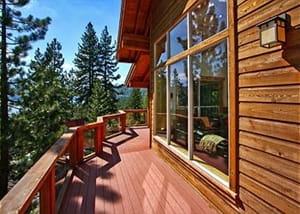
Everyone likes to spend time relaxing outdoors on a nice, warm sunny day when the opportunity presents itself. As a result, one popular trend businesses such as restaurants and hotels are moving toward is maximizing the use and enjoyment of their space with outside terraces. Whether it’s to attract more customers or to improve job satisfaction and quality of life at your business, motivation is high for the installation of an outside terrace. From a pest management perspective however, terraces create attraction for unwanted pests, posing new challenges that need to be addressed to ensure patrons enjoy their outdoor experience.
Pests that pose specific concerns in the outdoor terrace environment include flies, mosquitoes, wasps, ants, and rodents. These pests are highly mobile and are greatly attracted to food odours and spills, and all can quickly evacuate a terrace with their persistent presence. Should these pests begin to frequent the outdoor terrace they create an elevated risk of accessing the interior of the facility; a situation that could lead to an established pest infestation.
Prevention and Control
While it is virtually impossible to prevent pest activity around an outdoor terrace, there are several measures that can be implemented to both reduce the attraction of pests to the area and to restrict them from both the terrace and the facility proper.
Landscaping
An important tool for minimizing pest activity around a terrace is the performance of regular grounds inspections by management staff to identify conditions conducive to pests. Outdoor maintenance activities such as keeping grass trimmed, ensuring shrubs and tree branches are not resting against the structure, removing leaf litter and debris from around the building foundation, and ensuring proper drainage of landscaping will all help deter pest activity around structures. Landscaping materials such as mulch should be avoided as they promote rodent burrowing as well as ant and other insect activity; pea gravel is a good alternative.
Sanitation
Ensuring that food spills are promptly cleaned up and that the area of the spill is sanitized is critical to minimizing the attraction of pests. Ants, flies and wasps will quickly identify and begin feeding on food debris, creating a sudden nuisance to patrons. In addition to spills on the terrace, maintenance and proper location of the garbage handling area for the facility plays a key role in preventing pest activity. The garbage handling area should be located as far away as possible from the terrace as it is highly attractive; it must also be kept free of spills and emptied frequently. Other outdoor garbage containers around the property should have tight sealing lids and be emptied frequently to minimize attraction to pests, daily in summer months.
Exclusion
Excluding pests from the terrace is possible through constructing walls that support a framed in window and ceiling screen system. This provides the experience of sitting outside without the hassle of insects and can often enhance the enjoyment of the space through mimicking that cottage look. A large benefit of screened enclosures is the prevention of pests from accessing the main facility through open doors, as people continuously come and go to the terrace. Where screened enclosures are lacking, consideration should be given to installing an air curtain to block flying insect entry when the door is open, or an automatic door that closes when it is not in use.
Due to high traffic flow to and from the terrace, regular inspection of the door leading to this area should be performed to ensure weather-stripping is intact, preventing rodent entry as well.
Where elevated outside terraces are in place, it is critical to prevent wildlife and rodents from accessing the space underneath them for harborage. These areas should be closed off to block access with wood, lattice or other suitable material during construction.
Pest Management Program Tools
To supplement internal processes, a pest management program should be implemented for the facility with additional focus on the outdoor terrace and the opportunities for pests it may pose. A regular inspection looking for conducive conditions and reporting to personnel on site will go a long way to providing a successful control program.
Exterior rodent stations utilizing rodenticide or snap traps and strategically placed around the structure will minimize rodent presence. Stations are available that look like rocks for visible locations, while others can often be concealed with landscaping plants or shrubs. Insecticide applications can be performed where warranted to help control ants, flies and other crawling insects around the exterior perimeter of the facility. Flying insect light traps work well inside the facility to help capture flies and wasps that may gain access via the outdoor terrace.
We all like to enjoy some good food, company and conversation on the terrace; by implementing some of these strategies your customers can enjoy their time without interruption from any unwanted pesty guests.